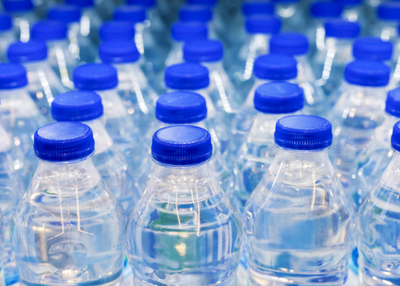Analies Dyjak | Policy Nerd
People often purchase bottled water under the assumption that it’s much safer than what’s coming out of their tap. Marketing schemes lead consumers to believe that large corporations bottle and distribute only the purest water from crystal clear springs. The reality is that bottled water isn’t as safe as people are led to believe. This article discusses the regulatory, environmental, and ethical dilemmas associated with bottled water.
How Is Bottled Water Regulated In The United States?
The Food and Drug Administration regulates bottled water, and the Environmental Protection Agency regulates tap water. People are often surprised to find out that the drinking water standards for both of these agencies are nearly the same. Under the Safe Drinking Water Act, certain chemicals that can enter drinking water must be allowable limits. This list of allowable contaminants and their concentrations are identical for bottled and tap water, with the exception of lead. FDA regulates lead more stringently because companies shouldn’t ever have a reason to use lead infrastructure in the bottling process. But still, there is an allowable level of lead in bottled water of 5 parts per billion. EPA, CDC, American Academy of Pediatrics and other health organizations have all acknowledged that there is no safe level of lead for children. FDA must follow their own monitoring guidelines, which are often much more lax than EPA’s for municipal tap water.
Where Does Bottled Water Come From?
A lot of bottled water companies are deceptive as to where they actually source their water. Companies are legally allowed to draw water from artesian wells, mineral water, natural springs, drilled wells, and municipal tap water. That’s correct. Bottled water companies are allowed to use the same treated water as municipal water systems. Additionally, companies are not legally required to disclose where they source their water on the bottle itself. Municipal water systems are actually much more transparent because they’re required to disclose information about source water in annual consumer confidence reports. Depending on the brand, there’s of course a substantial cost associated with purchasing packaged water.
Environmental Effects of Plastic Water Bottles
“Trash Island” in the Northern Pacific Ocean is probably the best physical example of the environmental effects of plastic and plastic water bottles. 91% of plastic isn’t recycled, meaning a majority of virgin, single-use plastic ends up in landfills or the environment. According to a 2016 study by the Ellen Macarthur Foundation, the ocean will contain more plastic by weight than fish in the year 2050. The main ingredient in plastic bottles is polyethylene terephthalate (Pet) which takes 400 years to decompose in the environment. Once degraded, dangerous chemicals such as Bisphenol A (BPA), polyvinyl chloride and other phthalates can leach into the environment. Not to mention the important natural resources required to make plastic water bottles. Plastic is a product of petroleum, which is a non-renewable fossil fuel.
The Ethics of Bottled Water
There’s also an ethical environmental dilemma associated with extracting water from a drought prone area, then selling it across the country or even the world. Nestle owns aquifers in California which has been experiencing a serious drought in recent years. Because Nestle is able to purchase expensive deep drills that municipalities can’t even afford, they’re able to continue extracting water business as usual. Additionally, native american tribes are significantly affected by bottled water companies. Tribes enter lease agreements with companies that are frequently violated. Even if they don’t have a legal agreement the same issues arise with the definition of “reasonable use” under the riparian law.
Other Articles We Think You Might Enjoy:Microplastics In Water: What You Need To Know
Endocrine Disruptors In Drinking Water
Water Conservation and Water Quality In The Sports Industry



